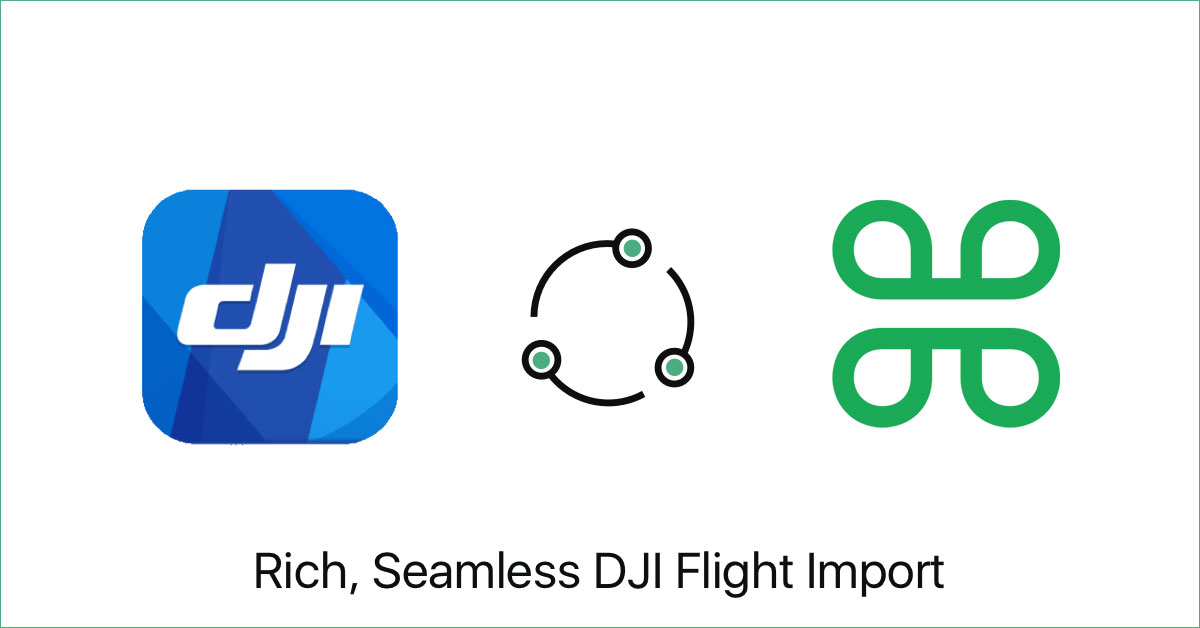The new, automated way to import your DJI flights.
Our mission at Kittyhawk is to unify the mission, aircraft, and data to empower drone operations. More and more of your critical workflows and data points happen inside of Kittyhawk’s native applications, but we realize there are times when a third party application is required in your operation. This is why we launched DJI Sync earlier this year, and this is why we’re excited to announce DJI Sync 2.0.
- We have a full Q&A at the end, but we wanted to highlight two key points:
Kittyhawk exudes a pilot-first philosophy. Kittyhawk is for pilots, by pilots. You are our priority, and we’re available if you have questions about features, need support, wanna go fly, you name it. - Kittyhawk is all about unlocking your data. Not simply unifying your flight data with the rest of your operations, but making it actionable. Now that we have DJI Sync 2.0, next on our roadmap is to introduce new integrations. We are already in discussions with other manufacturers about making it easier to deliver your data to your Kittyhawk accounts.

Introducing DJI Sync 2.0
When we launched Flight Deck (where you can fly inside of the Kittyhawk app), we did a major overhaul to our backend systems so that you can see second-by-second telemetry and view / query flight stats for a single flight or across flights. Searches or alerts for things like “how many flights had less than 5 satellites visible” or “what is the highest that my drone has flown this month” are coming soon to our new app and web interfaces.
With our new DJI Sync, all of this data that we’ve been capturing for your imports will be unlocked, visible, chartable, and searchable. Get ready for tons of actionable eye candy!
What You Need to Know
DJI Sync 2.0 is not just about better data, it’s about simplifying your operational workflow. Once you sync new flights from DJI Go, Kittyhawk will automatically detect and import those flights, automatically assigning or creating the correct aircraft and battery(s). This means the accuracy of your imports are spot on, and for those working in teams, your chief pilots and admins will see your flights without any manual steps on your part.
If you already have a DJI integration in place from the prior import process, we’ll be migrating those credentials Monday night, Pacific time.
If you are new to DJI Sync, you can set your credentials from the web or iOS app.
Once your integrations are set, just sit back and watch the imports come in. We’ll be monitoring for new flights, and at a minimum new imports will process on the hour.
We’ll have new videos on our YouTube channel to review the details and new UI on the web and mobile apps.
Q&A
How long will imports be down during the transition?
Imports on the web will be down starting today until Tuesday or Wednesday. We’ll post to Twitter and Facebook once everything is back. On the iOS app, be sure to download v6.8 which will go live in the App Store Monday evening (10/2). This will have the latest automated import functionality. Once everything is live, just be sure to check that your integration status is active (on either the web or app) and then sit back, relax, and the imports will flow. Until then, keep on flying. We’ll bring in all of those flights shortly.
What about other drones besides DJI?
We’ve already heard from a bunch of you about Autel and Yuneec, among others. We’re in contact with pretty much every manufacturer and our goal is to enable you by working with as many as we can. If you have specific requests, let us know and let them know. Your voice helps things move forward more quickly.
How does automated import work?
Just have to make sure your integration is active and enabled (you can view this from the website or iOS app), and then just sync your flights on DJI Go. We’ll pull in your flights.
What about Android?
We have a number of Android projects in the works and coming soon, including DJI Sync and Flight Deck. Stay tuned.
Do I select drone or battery(s)?
Nope. We’ll match up serial numbers (internal and external) to assign flights to the correct hardware automatically. If we don’t see the serial numbers, we’ll add a new drone or battery if needed. If you haven’t done so already, you can update serial numbers on the web or iOS app.
What about charts and other cool stuff?
Once we roll this out and complete the migrations, we’ll be adding new charts and maps to let you see all sorts of telemetry detail (similar to what we already do with Flight Deck telemetry.
What if an import fails?
If an import fails, we’ll reset it and try the process again. Any flights that persistently fail will be flagged in our system. If there is a particular import that is failing and you want us to take a look at, shoot us an email to team@www.aloft.ai.
Interested to learn more about Kittyhawk’s Commercial and Enterprise offerings? We work with the leading companies to power their drone operations and would love to hear what you’re working on.
Contact us to set up a demo.
Aloft
Kittyhawk unifies the mission, aircraft, and data to empower safe and effective enterprise drone operations.



